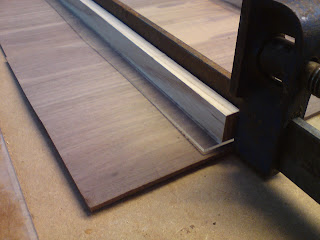NY34HQVBRBJ5
Here's my way of clamping up soundboards and guitar backs. I use some a flat board of MDF which has a film of book cover plastic suck to it. The glue will not stick to the film. Sash cramps are used to apply pressure to the joint and the weight of the cramps holds the boards flat. Note that the bottom of the sash cramps are used not the top. I have made three shoes that slide onto the bar of the sash made out of acrylic sheet and wood stuck together with double-sided tape. To make a strong fixture clamp the the pieces that are tape togehter in a vice and apply pressure and you will be surprised how strong the joint is. The shoes also hold the sash cramps upright as well as applying pressue to the boards keeping them flat. Any glue will not stick to the acrlyic sheet. hopefully the sideshow will reveal all. My website is http://www.richardniceguitars.co.uk











